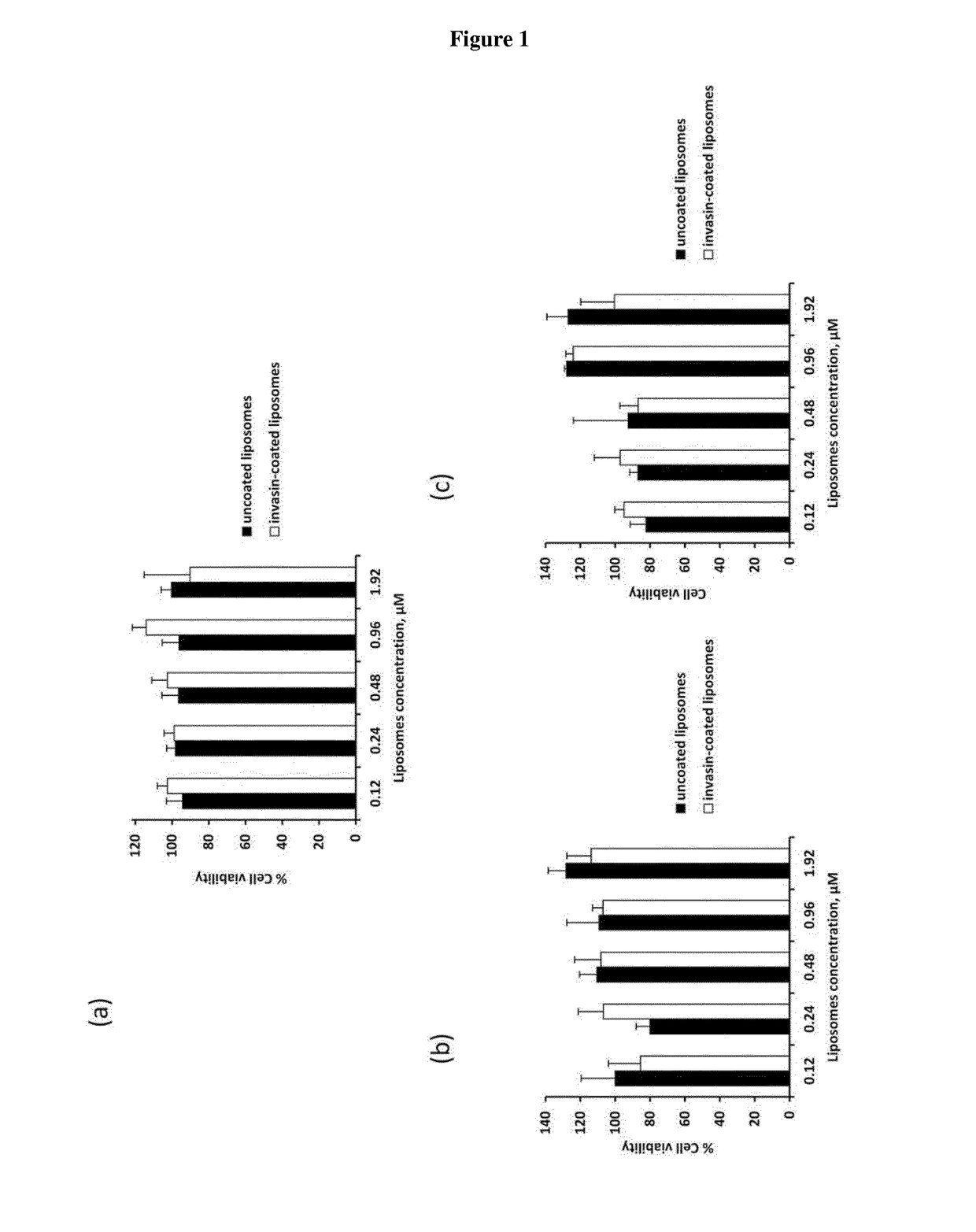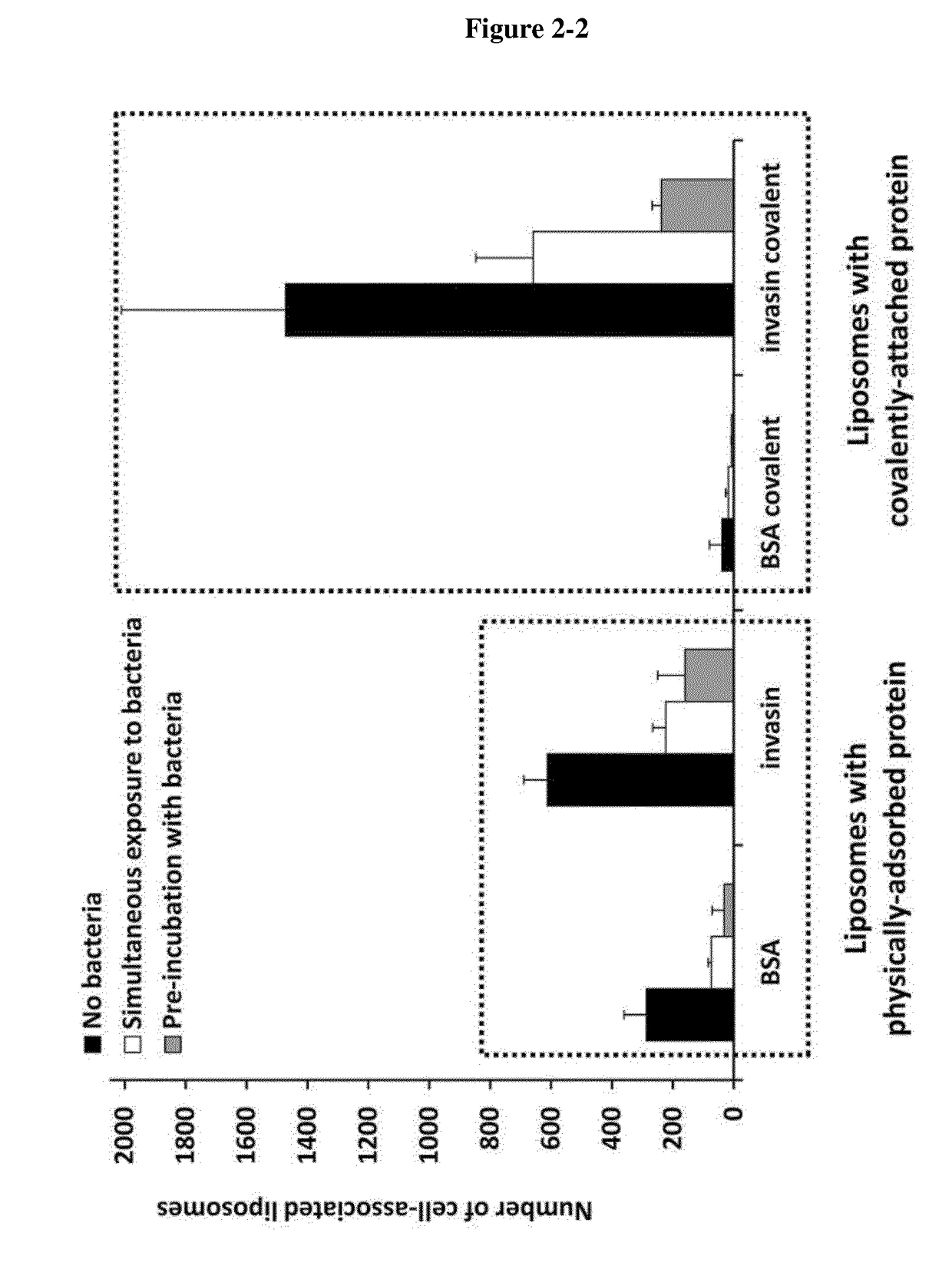Methods and compositions of carrier systems for the purpose of intracellular drug targeting
- Summary
- Abstract
- Description
- Claims
- Application Information
AI Technical Summary
Benefits of technology
Problems solved by technology
Method used
Image
Examples
embodiments
[0037]In the following passages different aspects of the invention are defined in more detail. Each aspect so defined may be combined with any other aspect or aspects unless clearly indicated to the contrary. In particular, any feature indicated as being preferred or advantageous may be combined with any other feature or features indicated as being preferred or advantageous. In the work leading to the present invention, it was surprisingly shown that pathogen entry proteins linked to a carrier are able to transfer an antipathogenic agent into a mammalian cell.
[0038]Based on these results the present invention provides in a first aspect a carrier system, comprising[0039](i) a carrier,[0040](ii) a pathogen entry protein or fragment thereof, which specifically binds to a molecule on the surface of a mammalian target cell of said pathogen and which is covalently linked to the surface of said carrier, and[0041](iii) at least one hydrophilic antipathogenic agent.
[0042]The pathogenic entry...
example 1
Lipid Film Hydration Method
[0105]Liposomes were prepared by the lipid film hydration (LFH) technique as previously described by Bangham and his colleagues. In a round bottomed flask and in a molar ratio of (6:0.6:3), DPPC, DPPE and cholesterol respectively were dissolved in 5 ml of chloroform: methanol (2:1). 10 μg / ml of Rh-DPPE was added to color the liposomes for the imaging experiment. The flask was then connected to a rotary evaporator (Buchi Switzerland) equipped with a vacuum controller set at 200 mbar, and a heating bath set at 70° C. for 1 h. This led to the formation of a dry lipid film. The vacuum controller was then set at 40 mbar for another 30 min to remove any residual traces of the organic solvent. A 5 ml volume of gentamicin solution (10 mg / ml) in phosphate buffered saline (PBS pH=7.4) was added to the dry lipid film and rotation was recommended at 50° C. for 1 h, leading to the hydration of the lipid film and the formation of MLV. The resulting MLV were then extrude...
example 2
Microencapsulation Vesicle Method (MCV)
[0106]Liposomes containing gentamicin were prepared in two steps via this method; emulsification, and dispersion with mechanical agitation. The emulsification step was done by dissolving DPPC: DPPE: cholesterol a in molar ratio of 6:0.6:3 in 10 ml dichloromethane, then 5 ml of PBS containing 10 mg / ml gentamicin was added. The mixture was emulsified with a homogenizer (Polytron PT 2500 E, Germany) at 7000 rpm for 10 min resulting in the formation of water in oil emulsion (W / O). The first emulsion was then diluted 1:3 in PBS and mixed at 520 rpm and 30° C. to form water in oil in water emulsion (W / O / W). Stirring was continued until the organic solvent was completely evaporated (60 min). The liposomal dispersion was finally extruded through 200 nm pore size polycarbonate membranes to form liposomes of optimal size.
PUM
| Property | Measurement | Unit |
|---|---|---|
| Fraction | aaaaa | aaaaa |
| Molar density | aaaaa | aaaaa |
| Molar density | aaaaa | aaaaa |
Abstract
Description
Claims
Application Information
 Login to View More
Login to View More - R&D
- Intellectual Property
- Life Sciences
- Materials
- Tech Scout
- Unparalleled Data Quality
- Higher Quality Content
- 60% Fewer Hallucinations
Browse by: Latest US Patents, China's latest patents, Technical Efficacy Thesaurus, Application Domain, Technology Topic, Popular Technical Reports.
© 2025 PatSnap. All rights reserved.Legal|Privacy policy|Modern Slavery Act Transparency Statement|Sitemap|About US| Contact US: help@patsnap.com



